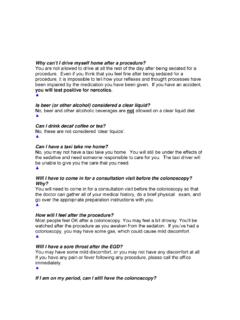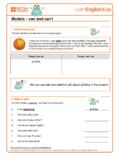Transcription of A Pocket Guide To Can Defects - EVCO Wholesale …
1 A Pocket Guide TO CAN Defects Association of Food & Drug Officials 1 Purpose of 2 Classification for Defective/Damaged Canned 3 Photographs of Defective/ Damaged Class 4-7 Class 8-9 Class 10-11 Definition of Terms Commonly Used in External Can Defect 14 Canned foods are the safest food processed today. Approximately 60% of food consumed in the United States is thermally processed and packaged in hermetically sealed containers. However, regardless of the safety assured in canned foods, any damage or defective canned products are a potential public health problem. Defective cans may leak and allow microorganisms to enter that may cause food poisoning or other significant health problems.
2 The deadly food poisoning, botulism, is always a significant threat and a potential public health problem to consider when dealing with serious defective/damaged canned food containers requiring inspection, evaluation and sampling. It is imperative that canned food products with visual and/or external Defects be recognized. Those containers with significant Defects should not be sold, distributed or consumed. However, canned foods with insignificant Defects (Aesthetic Defects ) normal represent no public health hazard, , if the hermetic seal on the can has not been jeopardized, these products are generally considered safe and when properly labeled, such products are acceptable for distribution and sale.
3 This Pocket Guide is intended in part to help resolve the question which frequently arises concerning the evaluation and safety of canned food products, , when does the can defect of damage become severe enough to represent a public health concern or hazard. This simplified Guide shows in color some of the major types of can Defects which may be commonly found by visual observation. It categorizes the Defects /damages according to their degree of potential hazard, and shows what to look for in the routine visual inspection of the finished product. These classifications may change after laboratory examination. It is essential that prior to sale, samples of each defect suspected of causing loss of hermetic seal be collected for laboratory examination , measurement and integrity of can seams, microbiological analysis of contents, etc.
4 Note that a hermetically sealed container for canned foods and/or beverages is considered as one that is appropriately constructed/designed and intended to assure no entry of bacterial microorganism and thus maintain the commercial sterility of it s contents after thermal processing. Other definitions commonly and frequently used in the visual evaluation of can Defects are included as part of this Pocket Guide for a quick and simple reference and for easy us in the field. DEFINITION OF Defects (Updated November 1987) Number and color ratings are used throughout this Guide for simplification. From visual examination, if presence of microbial growth or evidence of loss of hermetic seal is in question (Class I or II); the container must be examined in the laboratory.
5 Class I Critical Defects : Defects which provide evidence that the container has lost its hermetic seal ( , holes, fracture, punctures, product leakage, etc.) or evidence that there is, has been microbial growth in the can contents. This is a critical defect rating which would be considered a potential public health problem. Any lot which is found to have a defect must be ser aside and thoroughly inspected and sorted to ensure that no containers that have lost their hermetic seal are distributed. Class II Major Defects : Defects that result in cans which do not show visible signs of having lost their hermetic seal, but are of such magnitude that they may have lost their hermetic seal.
6 This is a major defect rating which may result in the loss of the hermetic seal and become a public health problem. Even though a Class II defect may not be health threatening by itself, a large number of cans with Class II Defects necessitates more extensive sampling of such lots before sale. Evidence of a significant number of Class II Defects may be considered a potential public health problem. Class III Minor Defects : Defects which have had no adverse effect on the hermetic seal. This is a defect rating of minor significance from a public health standpoint. This Guide is not concerned with Defects that only affect commercial sale. For example, dented cans which will not stack on shelves may be rated as a Class III when neither the double seam, side seam not the body has been adversely affected.
7 If the effect on the hermetic seal cannot be determined, sampling and examination would be appropriate. Class I Significant Defects Body/End Defects Bulged and/or swollen ends from gas formation in can which causes one or both ends to well producing a flipper, soft swell, hard swell or blown can. Can with likely loss of hermetic seal and normally a leaker due to the mislocked side seam. An opening below the double seam or plate fracture. 1 2 3 Plate fracture in double seam or can body. (Note position of red pointer). Severe double seam dent plate fracture. Puncture in can body. Pinholes in can body plate also cause loss of hermetic seal. 4 5 6 Closure on end of can reflects incomplete double seam (Double seaming operation not completed by manufacturer) Defect in end of closure on can (torn flange).
8 Note arrow pointer. 7 8 Depicts a false seam with loss of hermetic seal Seam is formed but not engaged properly. (Note knocked down flange). Example of cable cut on can end. Red pointer shows significant defect , , cut through double seam. Blue pointer depicts cut/abrasion not through double seam. 9 10 Class II Other Serious Defects Body Dents, End/Closure and Rust Defects Severly rusted with deep pits near point of perforation. Major body dent which has impacted on double seam. (Plate may be fractured with loss of hermetic seal). Major dent in center of can body. (Plate may be fractured with loss of hermetic seal). 11 12 13 Cut-over depicting sharp seam.
9 (Observe for potential plate fracture or loss of hermetic seal). Defect shown termed a vee or spur with end curl knocked down. Can is a potential leaker. Pointer indicates a knocked down flange . 14 15 16 Class III Aesthetic Defects Body/End Defects Surface rust and residue food cooked on end of can. (Minor external rust and light superficial pitting easily removable by light buffing is considered an insignificant defect). Paneled container without visible signs of loss of integrity, , no plate fractures. Obvious body dent on side of container body. Side seam and/or double seams appear not significantly affected. 17 18 19 Minor dent to double seam on end of can body, , it does not appear creased or sharp.
10 Minor buckle just extending into double seam on end of can body. (Double seam does not appear significantly affected.) 20 21 1. HERMETIC SEAL Hermetic means air tight. A hermetically sealed container is one that is suitably designed to maintain the commercial sterility of it s contents after processing, , preclude the entrance of bacteria and also maintain the desired vacuum or pressure in the can. Food and beverage cans (tin and steel) normally have three hermetic seals one along the side seam and on each at the top and bottom ends of the can. 2. SWELLS Both ends of the can are bulged. Neither end will remain flat without pressure. Soft swells yield to manual pressure, but no impression can be made manually on hard swells.








